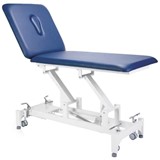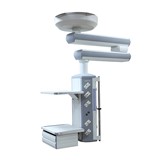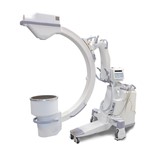Improving Patient Care: Key Lighting Standards for Medical Examination Rooms
Good lighting is vital for doctors and patients in medical examination rooms. It helps healthcare professionals perform exams accurately, making patients feel more at ease. Without the proper lighting, it’s harder to spot details, leading to mistakes.
That’s why there are specific lighting standards for healthcare settings. This article will explore these standards and how they help improve patient care and safety.
Essential Lighting Requirements for Medical Examination Rooms
-
Illuminance Levels
Illuminance refers to the amount of light that reaches a surface, measured in lux (lx). In medical settings, proper illuminance ensures that doctors and nurses can see the details needed for accurate diagnoses and treatment. Insufficient lighting can hinder visibility, while overly bright lighting can cause discomfort or glare.
The recommended illuminance levels vary depending on the specific tasks in the room. For general examination rooms, the recommended level is typically between 300 and 500 lux. For more intricate tasks, such as minor surgeries or detailed examinations, lighting levels of 1,000 lux or higher may be required. In contrast, consultation rooms often require lower lighting levels of around 200-300 lux to maintain a comfortable and welcoming environment.
-
Uniformity
Uniformity refers to the consistency of lighting across the entire space, ensuring no areas of uneven brightness. In medical examination rooms, consistent lighting is essential to avoid shadows and dark spots that could make it challenging to perform medical tasks. Poor lighting uniformity can lead to misinterpretation of visual cues, especially during physical examinations or procedures.
Lighting should be distributed to achieve proper uniformity, reducing areas of excessive brightness or darkness. A well-planned lighting layout that minimises shadows, particularly around the patient bed or examination table, can accomplish this.
-
Colour Temperature
Colour temperature, measured in Kelvin (K), describes the hue of light emitted by a source. In medical settings, the right colour temperature is vital for accurately viewing skin tones, tissues, and blood. Colour temperature in the 4000K to 5000K range is often recommended for medical examination rooms. This range provides a neutral white light, balancing warmth and coolness to enhance visibility and reduce eye strain.
Cooler light (higher Kelvin levels) helps to increase alertness and is ideal for procedures requiring attention to fine detail. In comparison, warmer light (lower Kelvin levels) may be more comfortable for patient consultations.
-
Color Rendering Index (CRI)
The Color Rendering Index (CRI) measures a light source's ability to show colours accurately compared to natural light. In medical environments, where visual assessment of a patient's skin, wounds, or tissues is critical, a high CRI is necessary. A CRI of 90 or above is recommended in medical rooms to ensure that colours appear true to life.
High CRI lighting allows healthcare professionals to see fine details clearly, which is especially important when distinguishing between shades of red (such as blood or inflamed tissue) and identifying subtle skin tone variations.
-
Glare and Reflection Management
Excessive glare or reflections can be distracting and uncomfortable for both patients and medical staff. Glare can reduce visibility, increase eye strain, and create discomfort, negatively affecting the quality of care and patient experience.
Indirect lighting and diffusers are effective solutions to minimise glare. Indirect lighting helps soften the light, reducing harsh reflections on surfaces like monitors, instruments, or even the patient’s skin. Diffusers scatter the light, ensuring a more comfortable and even light distribution without reducing overall illuminance. Properly positioned lighting fixtures also help avoid direct glare in areas where doctors and nurses frequently work.
Types of Medical Light Used in Examination Rooms
a. Ambient Lighting
Ambient lighting is the general lighting that brightens the whole room, making it functional for basic activities like walking, talking with patients, or organising supplies. It’s usually provided by ceiling lights or overhead panels that spread light evenly. While important, ambient lighting alone isn’t enough for detailed tasks and needs to be combined with other lighting types.
b. Task Lighting
Task lighting provides focused, brighter light for specific activities like medical exams or minor procedures. It helps doctors and nurses see details. This type of lighting is adjustable, so it can be directed where needed, reducing shadows and glare.
Examples of task lighting include:
-
Adjustable exam lights: These can be moved and positioned directly over the patient during exams.
-
Surgical lights: Used for more intense procedures, these lights provide strong and shadow-free illumination.
Task lighting is essential for precision work in medical settings.
c. Specialised Lighting
Specialised lighting is used for specific purposes beyond regular room lighting.
-
UV Lighting for Sterilisation: UV lights are used to disinfect surfaces and equipment, helping reduce the spread of germs. They are usually used after hours to keep the room sterile.
-
Dim-to-Bright Lighting Systems: These systems are helpful for patient care during the night. The lights can be dimmed or brightened as needed, providing enough light for doctors without disturbing patients too much. Gradual light changes make the environment more comfortable and calming.
Energy Efficiency and Sustainability
-
LED Lighting
LED lighting is a popular choice for medical facilities because it offers many benefits. These lights use much less energy than traditional lighting, lowering electricity bills. They also last longer, which means less frequent replacements and reduced maintenance costs. Additionally, LED lights produce very little heat, helping keep the room comfortable and reducing the need for air conditioning.
-
Smart Lighting Controls
Intelligent lighting controls, such as sensors and automated systems, make saving energy in medical facilities easier. Occupancy sensors automatically turn lights on when someone enters a room and off when it’s empty. Daylight sensors adjust indoor lighting based on how much natural light is available, reducing energy use during the day.
These systems save energy and make the space more convenient by ensuring the proper lighting is always available.
-
Environmental Impact
Energy-efficient lighting systems, like LEDs and intelligent controls, positively impact the environment. By using less energy, these systems help lower carbon emissions and reduce the facility's overall environmental footprint. The longer lifespan of LED bulbs also means less waste from frequent replacements.
Conclusion
Effective lighting in medical examination rooms is crucial for accurate diagnoses and patient comfort. Following specific lighting standards helps healthcare professionals see, reduces eye strain, and minimises errors during exams and procedures.
Good lighting includes appropriate brightness levels, consistent lighting to avoid shadows, suitable colour temperature for accurate colour perception, and a high Color Rendering Index to view skin and tissue colours accurately.
Combining ambient, task, and specialised lighting while managing glare creates a welcoming environment for patients and staff. Using energy-efficient LED lighting and smart controls also lowers costs and benefits the environment.
Get the Best Lighting for Your Treatment Room!
Take the next step in improving patient care. Get a quote for our high-quality examination lights and ensure your medical staff has the best tools for accurate diagnoses! Request quotes for examination lights now!

.jpg)












-160x160-state_article-rel-cat.png)









-205x205.jpg)